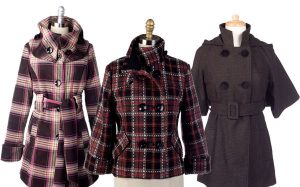
Russian is known as one of the coldest countries in the world with the winter that is relatively longer than most regions with four seasons. This definitely affects the way people dress in Russia, because fashion is always more than just a style but also comfort. Fur coat has always been one of the most popular clothing items in the country due to the reason mentioned before, although it still raises protests for being considered unethical. Let us now take a closer look at the Russian coat and 9 amazing facts about the design.
What to know about the coat industry in Russia
For a more modern brand, a coat is meant to be both simple and complex, industrially. Simple because in the market, Russians will gladly buy their products since fur coats are expensive and unethical. Difficulties begin when the production starts, especially for the manually sewn coats – it is cheap but very time-consuming. Secondly, the Russian industry does not favor good wool, cashmere and their blending variations, because of the increased Euro exchange rate. And yet there are a number of Russian brands that manage to find a way out of this situation. They make beautiful and comfortable coats that don’t cost too much but definitely deserve people’s attentions.
Interesting facts about coat, in general
Clearly, coat is not popular only in Russia but also in many places around the world where the weather could be quite cold. Here are 10 facts about long coats that you can find around the world:
1. Coat – This is an outerwear with a turn-down collar and lapels, fastened with one or two rows of buttons and made, as a rule, of a thick layer of wool, with or without additional lining. However, almost every element of the above definition may be missing or replaced by something else today.
2. The basis for the coat to this day is wool. But, despite this, coats are often sewn from a variety of fabrics: gabardine, moleskin, tweed or cashmere, as well as from all kinds of mixtures of wool with natural and synthetic components.
3. Coat length may vary. Modern fashion standards dictate the lower border of the knees, but, on the other hand, many gentlemen still prefer a “coat to the floor.”
4. It is believed that George Stanhope set the fashion for the coat. He is 6th Duke of Chesterfield, who has simplified bulky and elaborate military coats to a wearable design. The first coat of Chesterfield, however, was far from grace. A voluminous baggy coat on one row of closed buttons with a narrow collar was later inexplicably transformed in the minds of many manufacturers into elegant fitted double-breasted models.
5. Another one of the most important English surnames for coats is Crombie. Founded in 1805 by John Cromby, it is a workshop for sewing clothes for gentlemen that a century later became almost a monopolist and sheathed the British royal family, the court of the Russian emperor, and later the Politburo.
6. It is worth remembering that a double-breasted coat imposes special obligations on the person who wears it. This is not to be paired with jeans or rough boots, only trousers with impeccable lines and first-class shoes. In warm weather it can be matched with loafers – in the Italian manner.
7. In the case of single-breasted coats, all the taboos already seem to be broken once and for all. It goes well with anything from noble velveteen to rocker skinny jeans. This is the kind of coat, perhaps, that can be harmoniously combined with almost all clothing items except sneakers.
8. However, there are some details that automatically oblige you to a formal dress code. For example, a tightening strap on the back of the belt, a velvet insert on the lapel or pointed collars.
9. Of course a coat should only be dry-cleaned. Fortunately, the need for this procedure calls to be done several times in a year.
10. Some people say that a lightweight coat is not suitable for a harsh winter. Generally, this is true, but today you can see how a quilted vest or thin down jacket is put on under a coat, and this two-layer design easily replaces your voluminous jacket.
More facts about the coat that the Russians wear today
Several general facts about the coat above are actually applicable to the Russian’s too, like the points number two, three, six, seven, eight, and ten. Here are 3 closer facts about the design of the coat that is worn in the country:
1. The shoulder straps made of foam rubber or thick fabric are there specifically to decide which shape to give to your shoulders in order to transform the silhouette.
2. What about the non-functional buttons? This refers, of course, to those for which even the loops are not provided. The button doesn’t work as a fastener, but as a decoration element as well as the statement of social status. Their number and beauty will tell the class of a person.
3. Modern designers are determined to introduce a coat into the wardrobe of every Russian girl. It got to the point that they offer to wear it directly over a leather jacket. This is more than just a spectacular offer for a daring style and breaking all sorts of rules but also a very warm option on a cold, winter day.
Now you know why coat is essential in Russia, because it is more than just a warmer but also a symbol of wealth and sign of which era a person belongs to. If you visit Russia, especially during the winter or if you plan to roam around Siberia, make sure you bring a coat. The 9 points of facts above may help you to choose what sort of coat you can carry with you.
